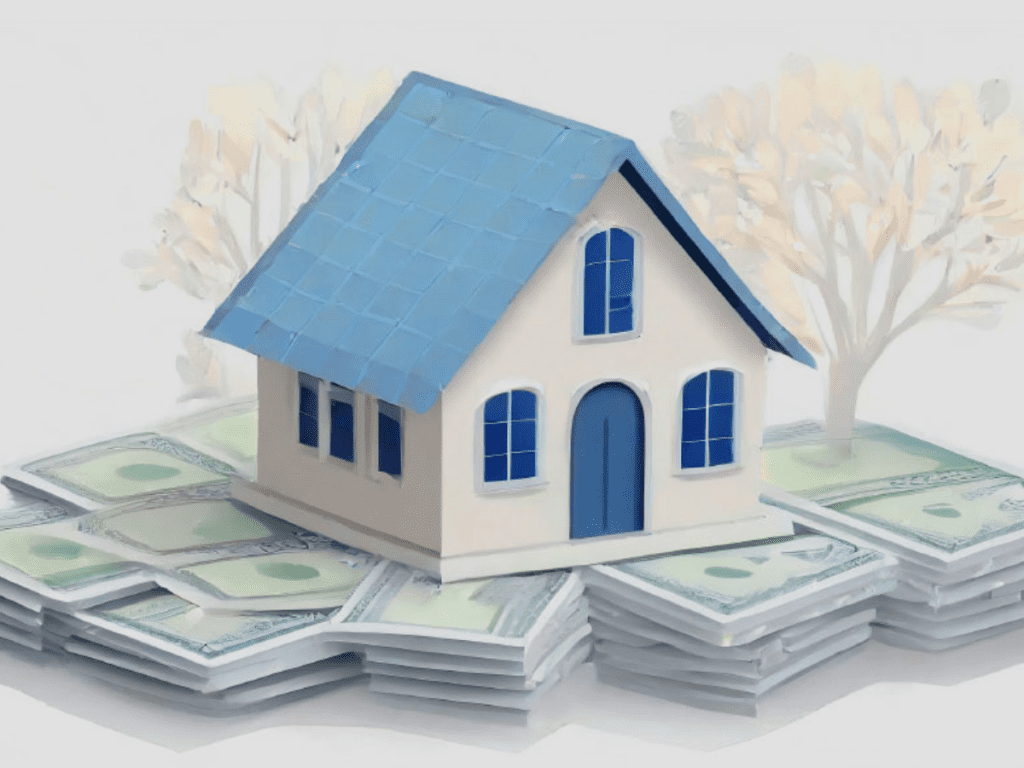Introduction
When you’re ready to buy a home, one of the most important factors to consider is the home loan or mortgage. Understanding the details of the mortgage process, particularly how home loan interest rates work, can make a significant difference in your financial future. The interest rate is one of the most critical elements of your mortgage because it directly affects how much you’ll pay over the life of the loan. In this comprehensive guide, we will explore home loan interest rates, how they are determined, and how they impact your monthly payments and overall loan costs.
What Is a Home Loan Interest Rate?
A home loan interest rate is the amount a lender charges you for borrowing money to purchase a home. It is typically expressed as an annual percentage rate (APR), which represents the cost of the loan as a percentage of the loan amount. The interest rate determines the total cost of the loan because it directly influences the amount you will pay each month, as well as the total amount you will repay over the life of the loan.
Fixed vs. Variable Interest Rates
Home loan interest rates generally fall into two main categories: fixed and variable. Each type has its own advantages and disadvantages depending on your financial situation and goals.
Fixed Interest Rates
A fixed-rate mortgage means that the interest rate stays the same throughout the term of the loan. For example, a 30-year fixed mortgage means that the interest rate will remain constant for the entire 30 years of the loan. This type of mortgage offers predictability, as your monthly payments will not change over time, making it easier to budget. Fixed rates are often preferred by homeowners who plan to stay in the home for a long period and want the security of knowing their payments will remain the same.
Variable Interest Rates
A variable-rate mortgage (also known as an adjustable-rate mortgage or ARM) features an interest rate that can fluctuate over time. The rate is typically tied to an index, such as the LIBOR (London Interbank Offered Rate) or the prime rate. The rate can change periodically, meaning your monthly payment could go up or down depending on market conditions. In the initial years of an ARM, the rate is often lower than that of a fixed-rate mortgage, making it an attractive option for buyers who intend to move or refinance before the rate adjusts. However, the risk of rate increases makes it less predictable.
How Are Home Loan Interest Rates Determined?
The interest rate you are offered on a mortgage depends on several factors. While each lender may have slightly different criteria, the following are the main elements that influence the rate:
1. Market Conditions
The overall economic environment plays a significant role in determining home loan interest rates. In general, interest rates are closely linked to the broader economy. When the economy is doing well, the demand for credit increases, and interest rates may rise as a result. Conversely, in a struggling economy, central banks may lower interest rates to encourage borrowing and spending. These shifts in the broader economic landscape impact the rates lenders offer on home loans.
2. The Federal Reserve (The Fed)
In the United States, the Federal Reserve (often called “the Fed”) has a significant impact on interest rates. The Fed sets the federal funds rate, which is the interest rate at which banks lend money to each other overnight. While the federal funds rate does not directly determine mortgage rates, it does influence them. When the Fed raises or lowers the federal funds rate, it typically causes corresponding changes in interest rates for loans, including mortgages. As a result, home loan interest rates often move in the same direction as changes in the federal funds rate.
3. Your Credit Score
Your credit score is one of the most important factors affecting your mortgage interest rate. Lenders use your credit score to gauge how likely you are to repay the loan on time. The higher your credit score, the lower the risk for the lender, which often results in a lower interest rate. A higher score (typically 740 or above) may qualify you for the best rates, while lower scores (below 620) often result in higher rates due to the perceived risk of default.
4. The Loan Amount and Term
The size of the loan and its term can also influence the interest rate you are offered. Larger loans may carry higher interest rates, especially if they exceed conforming loan limits (which vary by location). Additionally, shorter loan terms often come with lower interest rates, as they represent less risk for the lender. A 15-year mortgage, for example, may have a lower rate than a 30-year mortgage because the loan is paid off more quickly, reducing the lender’s risk.
5. Down Payment
The size of your down payment is another key factor in determining your interest rate. A larger down payment reduces the loan amount and shows the lender that you have more “skin in the game.” This lowers the lender’s risk and may result in a better interest rate. Generally, a down payment of 20% or more will help you secure a lower rate. If you put down less than 20%, you may be required to pay private mortgage insurance (PMI), which could increase your overall loan cost.
6. Type of Loan
Different types of loans come with different interest rates. Conventional loans, which are not insured by the government, tend to have higher rates than government-backed loans, such as FHA or VA loans. However, government-backed loans may require more paperwork and have stricter eligibility requirements. Depending on your situation, a government-backed loan may offer a more competitive interest rate.
How Do Home Loan Interest Rates Impact Your Payments?
The interest rate on your home loan directly influences your monthly mortgage payment. The rate determines how much of each payment goes toward paying off the principal (the original amount you borrowed) versus how much goes toward paying the interest on the loan.
Monthly Payments
For a fixed-rate mortgage, your monthly payment will remain the same over the life of the loan. This means that as you pay down the principal, a larger portion of your monthly payment will go toward reducing the loan balance, and less will go toward interest. However, in the early years of the loan, a larger portion of your payment will go toward interest.
For example, let’s say you have a $300,000 loan with a 30-year term and a 4% fixed interest rate. Your monthly payment will be approximately $1,432. If your interest rate increases to 5%, your monthly payment will rise to around $1,610, which could significantly impact your budget.
Total Interest Paid
The interest rate also affects the total amount of interest you will pay over the life of the loan. The higher the interest rate, the more you will pay in interest over time. For example, if you take out a 30-year mortgage for $300,000 with a 4% interest rate, you will pay about $215,000 in interest over the life of the loan. If the interest rate were to increase to 5%, the total interest paid would increase to approximately $266,000.
Amortization
Amortization refers to how the loan balance is gradually paid off over time. With a fixed-rate mortgage, the interest portion of your payment is highest in the early years of the loan. Over time, as the balance decreases, more of your payment goes toward paying down the principal. With a lower interest rate, you can pay off your loan faster, as more of your monthly payment goes toward the principal.
Strategies for Managing Home Loan Interest Rates
While you cannot control the interest rate environment, there are strategies you can use to manage your home loan’s interest rate and overall cost:
- Refinancing: If interest rates drop significantly after you take out your mortgage, refinancing may be a good option. Refinancing allows you to replace your current mortgage with a new one at a lower rate, which could reduce your monthly payments and the total interest you pay over the life of the loan. However, refinancing comes with closing costs, so it’s important to calculate whether the savings outweigh the fees.
- Paying Extra on Your Mortgage: Making extra payments toward your mortgage principal can reduce the amount of interest you pay over time. By paying off your mortgage faster, you can reduce the total interest cost, even if the interest rate remains the same.
- Consider Adjustable-Rate Mortgages (ARMs): If you plan to sell or refinance within a few years, an adjustable-rate mortgage (ARM) may offer lower initial rates than fixed-rate mortgages, saving you money in the early years of the loan.
- Shop Around: Different lenders offer different rates, so it’s worth shopping around and comparing offers from multiple banks or mortgage brokers. Even a small difference in interest rates can save you thousands of dollars over the life of the loan.
Conclusion
Home loan interest rates are a critical component of the mortgage process. Understanding how they work and how they affect your payments can help you make informed decisions about your home purchase. By choosing the right type of loan, shopping around for the best rate, and considering strategies like refinancing or paying extra toward the principal, you can manage your mortgage effectively and reduce the total cost of your home loan. Whether you’re a first-time homebuyer or looking to refinance your existing mortgage, having a clear understanding of interest rates is essential to securing the best deal and making a sound financial decision.

